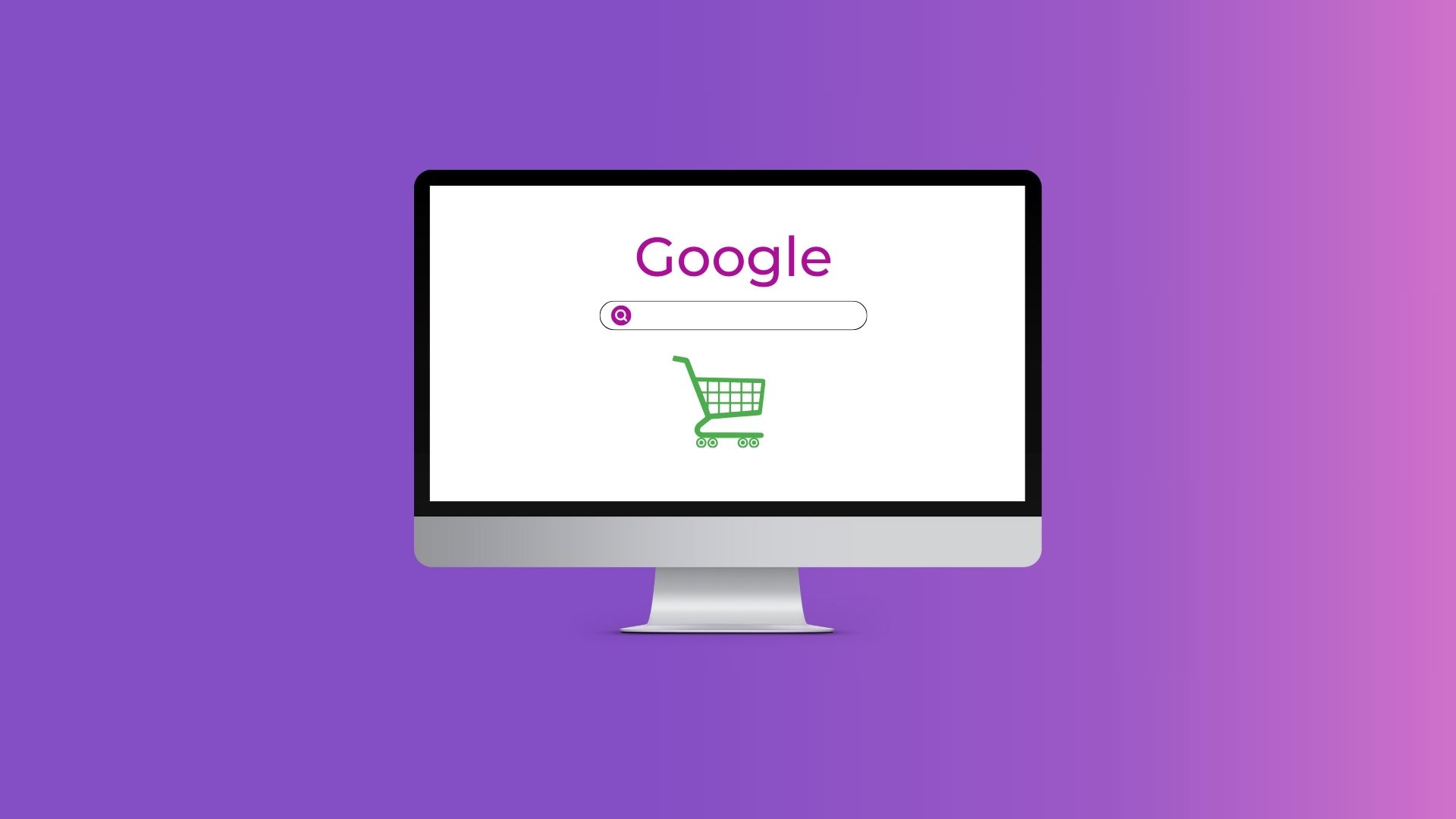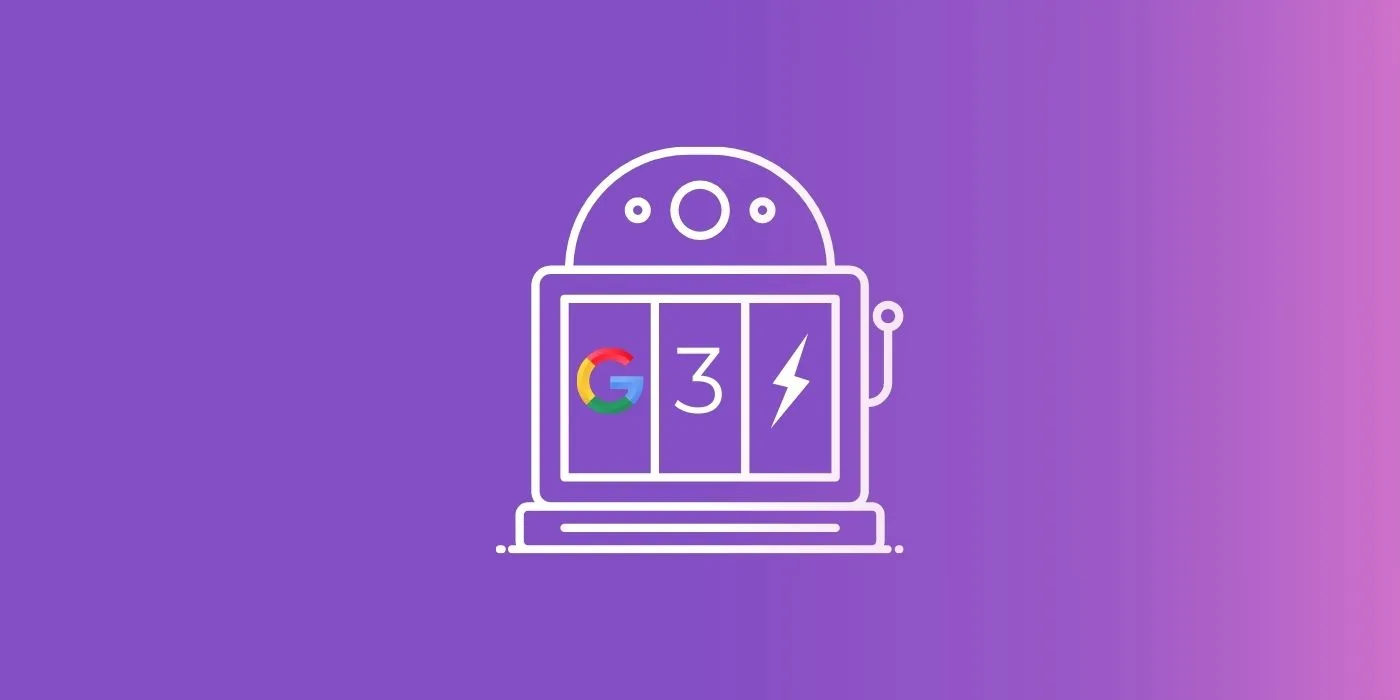Easy Shopify SEO Tips: From Launch to Sustainable Sales Growth

Pre-launch Shopify SEO Checklist
It’s exciting to publish your Shopify store online. For a successful launch, optimize it with these SEO elements first.
Select a relevant domain name
When choosing a domain name, your store’s branding should stand out. This makes your website unique, both in the eyes of users and search engines.
However, there are other key aspects in brainstorming for a domain name.
An SEO-friendly domain name contains the following elements:
- Relevant keywords: Research target keywords in your niche, even the broader ones. You can include a keyword in your domain name but do it strategically. It’s better if your Shopify store’s name already contains a keyword. This way, you can naturally insert it into your domain name.
- Short and clear: You want users to easily remember your Shopify store. One way to do this is to keep your domain name short. The ideal domain length is between 7 and 15 characters, excluding the domain extension (such as .com, .org, or .net).
- Correct extension: The most trusted domain extensions for an eCommerce store are .com, .shop, and .store. If you’re optimizing for local SEO, you can use country codes like .us (United States), .ca (Canada), or .uk (United Kingdom). The right domain extension will help your eCommerce site gain more trust.
If your shop sells yoga mats as a flagship product, you want to be more specific in your domain name. You don’t just say, “yogamatshop.com”. The domain name “organicyogamatshop.com.uk” is more SEO-friendly. This domain name includes a target keyword and a country code to help localize your business.
You can use free domain name generator tools to check for domain availability and suggestions. GoDaddy, Shopify, Nameboy, and DomainWheel offer such tools for free.
Optimize your Shopify theme for SEO
There are many eye-catching, captivating Shopify themes to choose from. You can customize a free theme or buy one from the Shopify Theme Store.
However, don’t get too caught up in the aesthetics.
Optimizing your theme for SEO is still the most important aspect of designing a website. For example, aesthetics won’t matter if your site takes a long load. Remember, the ideal page load time is between 0 and 2 seconds. Anything more than that could instantly drive away your visitors.
Optimizing your Shopify theme for SEO involves streamlining the following elements:
- Loading speed: Choose a theme that does not overuse multimedia elements. You can also use image compression tools to reduce the file size of product photos.
- Website architecture: Your theme should have well-organized category pages and clear navigation links. The goal is to make it easier for users to find the desired product.
- Blog integration: Helpful content (like informative blogs) was a big part of Google’s September 2023 update. It’s not enough for online stores to only focus on product pages. Integrating your Shopify store with blog content can boost your search engine rankings.
Providing a smooth UX (User Experience) should be a priority when choosing a Shopify theme.

Keyword research for product pages and categories
Neglecting keyword research is like forgetting to bring a weapon to war.
Without the right keywords in your arsenal, your store is going in blind on search engines. You won’t have a grasp of users’ search intent. In turn, your visibility on search results could become non-existent.
Doing keyword research is an essential aspect of Shopify SEO. Here’s an easy guide to turning your keyword ideas into a gold mine:
- Create a buyer persona: Identify the characteristics of your ideal customer, including their age, location, interests, and buying habits.
- Use existing resources: Shopify allows you to integrate your Google Search Console and Google Analytics accounts. You can use these tools to check existing top-performing keywords.
- Focus on long-tail target keywords: Product search intent is very specific and niche-based. A long-tail target keyword is your best chance to rank high on search results.
- Monitor your progress: A target keyword might be relevant only for a given period. Make sure to optimize your keyword list periodically.
In addition, doing competitive research can help you discover high-performing keywords. Running an SEO competitor analysis will get you insights on the keyword strategies of other relevant sites. You can analyze your competitors’ keywords through tools like Ahrefs or Semrush.

Create SEO-friendly URLs
An SEO-friendly URL allows for easier crawling and indexability, which will attract search engines’ attention.
URLs aren’t just for search engines, though. Users also use URLs as guideposts when navigating your Shopify store. Users will easily remember your website if you have clear and descriptive URLs. It’s a simple optimization, but a good URL is easily one of the best practices in conducting eCommerce SEO.
So, how do you make your URLs SEO-friendly? Have a look at these simple yet important tips:
- Follow a consistent hierarchy: Maintain a consistent flow in your URLs. Use the same structure for products and sub-categories under a particular category page.
- Keep it short: The ideal length for a URL is 75-100 characters. While you can be descriptive with the URLs of your product pages, try to keep them shorter to make them easier to remember.
- Use redirects: Fix broken links by using a 301 redirect. You avoid the “404 Not Found” error through redirects, particularly when you change a specific URL.
Take for example, these two URL examples:
- Bad URL: www.example.com/how-to-clean-your-yoga-mat
- Good URL: www.example.com/blog/how-to-clean-your-yoga-mat
The difference between these two URLs is actually very subtle. By inserting the category “blog” in your URL, you’re following a consistent hierarchy. Also, you’re letting users know that your shop has a blog section. These simple optimizations could have a bigger impact down the road.
Here’s another bonus tip: avoid stop words (a, an, the, of) in your URLs. These words will just prolong your URLs.

Set up Google Search Console and Analytics
Analytics tools, such as Google Search Console and Google Analytics, can greatly benefit your Shopify store.
The Search Console is a Google tool that offers these free features:
- Performance report on search results
- URL inspection tool
- Mobile usability report
- Core web vitals report
- Sitemap report
On the other hand, Analytics provides these key insights:
- Audience demographics
- User acquisition
- Product performance
- Shopping behavior
- Conversion rate
It’s very easy to integrate these tools into your Shopify store, too. You just click on “Add Property” on both platforms. Enter your Shopify store’s URL and verify your ownership through an HTML tag.
You can browse through the Shopify Help Center resources to get specific instructions. For example, they have this detailed guide on how to set up Google Analytics 4 tags for your store.

Launch SEO Strategies for New Shopify Businesses
Attract organic traffic to your Shopify business through a strong SEO foundation.
Create high-quality content for product pages and blog posts
For eCommerce businesses, user intent is the centerpiece of content strategy.
The specificity of user intent is unique in Shopify stores. When a user searches for a product, they do so in a very particular way. For example, they won’t just search for a yoga mat. Instead, they will type in “eco-friendly yoga mat under $40”.
With long-tail keywords in mind, here are effective ways to create content for Shopify stores:
- Focus on benefits: Drive your content around user benefits, whether a blog post or a product page. Potential customers are more interested in how a product can address their pain.
- Experiment with content formats: A blog post can take on various forms. You can experiment with listicles, how-to guides, news updates, and case studies.
- Make it mobile-friendly: Most users now shop online using their smartphones. Ensure your product and other pages are optimized for mobile use.
We’ve talked about the importance of keywords right from the start. However, keyword stuffing remains a no-no in SEO playbooks. Create blog posts and product descriptions by naturally integrating keywords.

Utilize meta tags effectively
Meta tags produce relevance signals that could improve your store’s visibility.
For instance, a compelling meta description can encourage users to click on your link. This will improve your CTR (Click-Through Rate), and increase your engagement rate.
Meta descriptions and meta titles are crucial for your on-page SEO strategy. They help search engines to better understand your content. This will positively influence your search results rankings.
Here are essential guidelines for optimizing your meta descriptions and meta titles:
- Character length: Ideally, a title tag should be under 60 characters, and a meta description should be under 160 characters.
- Uniqueness: Use unique meta tags for product pages, collection pages, and blog pieces. However, ensure a consistent brand voice in every meta description and title tag.
- CTA (Call-to-Action): Incorporate a CTA to engage potential customers. Typical CTAs for a Shopify store include “Buy Now”, “Add to Cart”, and “Shop Now”.
Meta descriptions and title tags are crucial for streamlining your SEO performance. You can use analytics tools to assess and refine the performance of these elements.

Build backlinks through outreach and partnerships
Contrary to what many people think, eCommerce link-building should still be prioritized today.
Sure, backlinks may have a decreased value today. Still, it remains a ranking factor in Google and other search engines. Backlinks from other websites act as votes of trust for your Shopify store.
However, Google is doubling down on spammy links and content. This means that you have to rethink your link-building strategy. In 2025, you should be doing link-building like this:
- Aim for natural backlinks: Our content library should be informative and helpful. High-quality content establishes your authority in a specific niche; other web pages will link to you as a credible reference.
- Focus on relevance: Always aim to get backlinks from relevant websites. Relevance is key in today’s backlink strategy.
- Personalize your outreach efforts: Personalize your emails when offering guest posts. This is a starting point for building long-term collaboration with webmasters and influencers.
Remember, stay away from spammy links and other black-hat link-building practices.
Utilize social media for brand visibility and search engine optimization
Social media go hand-in-hand with brand visibility.
There are 4.95 billion social media users in 2024. Social media presents so many growth avenues for your Shopify store. It could even affect, albeit indirectly, your search results rankings.
How do you incorporate social media into your SEO checklist? Take a look at these valuable tips:
- Partner with influencers: If you have enough budget, you might want to consider influencer marketing. It’s not free, but the ROI (Return on Investment) could be significant. Just make sure to collaborate with influencers in your niche or industry.
- Follow a regular content schedule: Posting every day on your social media platform is not a requirement. The key is to follow a consistent flow, whether every other day or bi-weekly. Social media algorithms might pick up on your schedule and show your content to more people.
- Integrate keywords in paid ads: This applies when boosting content through social media ads. Make sure to integrate keywords and hashtags to increase reach and engagement.
Also, experimenting with different content types could keep your audience engaged. You can use infographics, customer stories, videos, and live streams.

Leverage Shopify’s built-in SEO features and apps
Shopify offers free built-in SEO features that your store can use.
Here are several valuable SEO elements that Shopify provides:
- Auto-generated canonical tags to prevent duplicate content
- Auto-generated XML sitemaps and robots.txt
- Options to edit title tags, meta descriptions, and unique URLs
- Ability to insert alt text for images
Moreover, there are free Shopify apps that you can integrate with your store. To get one, go to the Shopify App Store. Most of these Shopify apps also offer free plans.
We listed some of the best Shopify SEO apps below:
- Tiny SEO: App for optimizing images and site speed
- TrustReviews: App for displaying and managing customer reviews
- Smartli: App for using AI-generated and SEO-optimized product descriptions
Make sure to study the features of these apps to maximize their features.
Scaling Shopify SEO as Sales Begin to Roll in
How do you ensure your store can keep up with increasing sales? Explore these strategies to set up your Shopify store for sustainable growth.
Conduct regular SEO audits to identify and fix issues
In SEO, some things could go wrong without you noticing them.
If you’re not careful, minor SEO issues could become a major nuisance. This is why you need to conduct regular SEO audits.
Your SEO checklist is a very long list, though. First, you have to identify the aspect you want to focus on. You can conduct audits on these focal points:
- Technical SEO: Schema markup, structured data, image optimization, internal linking, and mobile-friendliness
- On-page SEO: Keyword cannibalization, content relevance, and meta tag optimization
- Off-page SEO: Backlink profile, social media engagement, and brand mentions
You can utilize SEO tools to conduct regular audits. Tools like Ahrefs, Semrush, Screaming Frog, and SurferSEO offer free limited versions.

Expand keyword targeting based on sales data and market trends
Relevance of keywords will change from time to time, especially if you have seasonal products.
As customers’ pain points and interests evolve, you may need to change the keywords in your product and category pages. One way to do this is to leverage your sales data.
Using your sales data to collect keyword insights involves the following steps:
- Identify your best-selling products. Look into long-tail keywords that you can integrate into these products.
- Identify your underperforming products. Consider alternative keywords that could boost the descriptions on these product pages.
- Research the demographics of your customer base. Take note of their age, location, interests, and buying patterns.
Market trends play a huge role in your success. Create an actionable plan for seasonal trends and abrupt market changes.
Implement advanced on-page SEO techniques
Ranking factors have changed alongside search engines’ evolving algorithms, and as a result, SEO is also seeing new techniques and methods.
These changes affect how on-page SEO is done today. Keywords aren’t enough to increase your visibility on search engines. These trending techniques are changing the on-page SEO landscape:
- Featured snippets: Do you see those short blurbs that appear on the first page of search results? These are called featured snippets. You can rank for these snippets by answering trending questions in your niche.
- Strategic internal links: Google now looks into the relevance and logic behind internal links. You must think of easy website navigation when planning your internal linking strategy.
- Topical authority: What are the relevant products and topics in your niche? Creating helpful content around these entities could improve your SEO performance.

Optimize product listings for Google Shopping and other e-commerce platforms
As an online store, one of your goals is to increase the visibility of your product listings.
Thankfully, there are tons of platforms for your product listings. Here are examples of these online marketplaces:
- Google Shopping
- Amazon
- eBay
- Walmart Marketplace
- Etsy
- Social media (Facebook Marketplace, Instagram Shopping, TikTok Shopping)
However, don’t just put up a listing without optimizing it first. The competition is very high in these marketplaces. To rise above your competitors, consider these optimization tips:
- Ensure accuracy in product titles, descriptions, and specifications
- Use high-quality images for users to better understand your product
- Utilize platform-specific attributes to put your listing in the correct category
Another way to keep up with the competition is to monitor your competitors’ pricing. To attract potential customers’ attention, try offering promos and deals.
Use email marketing and content marketing to boost SEO efforts
Blending email marketing and content marketing can drive more traffic to your store.
These two marketing strategies aren’t usually used in the same sentence. However, this is a practice that people wrongfully overlook.
Combining email and content marketing strategies can be a growth driver. Here’s how you can do this:
- Use email signups: Do you see those website pop-ups that encourage people to sign up for a newsletter? You can use this strategy, too. Offer free downloadable content like ebooks in exchange for an email signup.
- Analyze your email list: Observe your email subscribers’ purchase history and engagement patterns. Use this data to segment your email list. This will allow you to personalize your emails and offer interesting content.
Furthermore, ensure that you’re always tracking the performance of your email campaign. Monitor performance indicators like CTR, email open rates, and website traffic. You can also check this eCommerce email marketing guide to learn how to optimize email sequences.

Maintaining Sales Growth with Ongoing SEO Strategies
Don’t get complacent with your sales growth. Consider these SEO tactics to sustain your Shopify store’s momentum.
Creating a consistent content schedule to keep the website fresh
Winging is not always effective in pushing content on search engine results pages.
The algorithms of search engines pick up on websites that regularly publish content. To maintain a consistent workflow, try to follow a content calendar. Here’s a step-by-step approach to doing this:
- Determine the demographics and interests of your target audience
- Research trending topics in your niche
- Use tools like Notion, Trello, and Asana to create a content calendar
- Plan for seasonal content to capitalize on organic search traffic
Nowadays, every publishing platform has its scheduling tool. Even your CMS (Content Management System) has a scheduling feature that you can use.

Incorporating user-generated content and reviews
What is the first thing that you check when researching products? Most people check customer reviews before committing to a purchase.
User-generated reviews are credible sources of information for your potential customers. These reviews establish trust, which could also increase your conversion rate. To encourage your customers to leave a review, you can push these activities:
- Launch contests or giveaways where customers need to submit photos of using your product
- Encourage customers to use your unique hashtags
- Request (in a polite way) your customers to leave a review after using your product
So, how do you incorporate this kind of content into your Shopify store? It is very easy—even Shopify offers a built-in Reviews app. This will help you manage customer reviews directly.
Staying updated with search engine algorithm changes and industry trends
Major search engines like Google constantly update their algorithms. Sometimes, Google rolls out a major update, such as the March 2024 Core Update.
To keep up with algorithm changes, try to follow these reputable SEO websites and resources:
- Search Engine Land
- Search Engine Journal
- Backlinko
- Google Search Central Blog
- Bing Webmaster Tools
Of course, tracking your website’s performance on search engines is still best. Monitoring your analytics gives you insights into search engine algorithm changes and industry trends.
Continuously analyzing competitors and adjusting tactics for a competitive edge
A well-executed SEO competitor analysis can influence both SEO performance and product development.
That’s the beauty of SEO – you’re hitting two birds with one stone. These Shopify SEO best practices are not just for organic search visibility. You’re also gaining insights on how to develop your entire marketing playbook.
When doing an eCommerce competitive analysis, here are key points you should focus on:
- Website design: How do your competitors provide a smooth UX to their customers?
- Content strategy: What types of content and topics do your competitors write about?
- Pricing and promotions: Can you match your competitors’ pricing structure without compromising profit margins?
For an easier process, use competitive analysis tools like Semrush, Ahrefs, and Similarweb.

Is SEO Worth It for Ecommerce?
Yes, doing SEO is worth it for an eCommerce business.
Launching an SEO campaign allows you to position your online shop for success. The returns don’t come quickly, though. SEO is a long-term investment that will drive sustainable growth to your eCommerce site.
Moreover, Google’s algorithm updates present a big challenge today. Keeping up with these changes requires constant monitoring and regular audits.
If you have an in-house SEO team, always remind them to do audits on your website. Otherwise, you can hire a digital marketing expert to do this for you. For example, an SEO marketing agency like Fortis Media could effectively run an audit for you. This way, you guarantee that your eCommerce store follows the current algorithms.
Shopify SEO tips: Key Takeaways
Tracking the simplest SEO elements is crucial to your Shopify store’s success.
Did you fix broken links as part of your technical SEO audit? Have you tried to implement structured data for your content? Did you correctly map keywords for your category pages?
These may be simple questions, but they will help your Shopify store rank higher. If you’re unsure where to start your SEO journey, contact experts. Online businesses are now collaborating with trusted digital marketing teams like Fortis Media. Partnerships like this guarantee sustainable growth for your business.
FAQs About Shopify SEO
Is the Shopify website SEO-friendly?
Yes, Shopify is an SEO-friendly eCommerce platform. It offers built-in SEO features, mobile-friendly themes, and straightforward content management, which allow you to avoid common issues like broken links and duplicate content. Shopify does offer a built-in blog, although it lags in performance compared to a CMS like WordPress.
Is SEO difficult in Shopify?
Basic SEO tactics are not difficult to carry out in a Shopify platform. Shopify provides fundamental SEO needs like meta attributes for your product listings. However, doing advanced elements in Shopify could be a challenge. You might encounter challenges in optimizing schema markup and fixing other technical SEO issues.
Does the Shopify theme affect SEO?
Yes, the Shopify theme you choose could affect your SEO performance. Each Shopify theme offers unique layouts for your product pages and blog section. When choosing or customizing a theme, check how SEO-friendly it is. An ideal Shopify theme includes schema markup integration and image optimizations.
Do Shopify tags affect SEO?
Shopify tags don’t directly influence SEO compared to keywords and backlinks. However, they can lead to improved store navigation and UX. These tags can engage your users, resulting in longer session durations and a lower bounce rate.
Read our other articles

iGaming SEO: The Ultimate Guide to Ranking iGaming Sites in 2025


How SEO and PPC Work Together: A Practical Guide


What is a PPC Agency? A Comprehensive 2025 Guide






